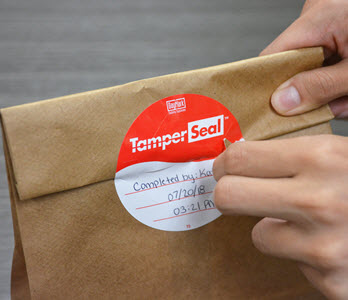Important Things to Know About Delivered Food and Ensuring its Safety
Posted on 20th Aug 2018

For years, churches and senior assistance groups, as well as a variety of social organizations, have been delivering hot and cold, ready-to-eat food to those that are homebound.
Often, these are either elderly people, those with long-term illnesses or people needing special care of one sort or another.
Even though churches and similar organizations have been providing services such as this for quite some time, it’s always possible that a delivered food item can spoil and cause someone to get sick. And because many of the recipients of these home food deliveries are already experiencing health concerns, such food-borne illnesses can become quite dangerous very fast.
So here’s a little refresher course on ways to make sure the food your organization delivers is safe and healthy:
Be Aware of the “Danger Zone”
When cooked food leaves your organization’s oven, it likely is very hot—but it can cool quickly, and soon enter what is called the “danger zone.” This is when food cools to temperatures above 40° F. Health-endangering bacteria such as Staphylococcus aureus, Salmonella, E. coli, and Campylobacter can grow in food items at these temperatures and potentially cause illness. In fact, the number of bacteria in food items can double every 20 minutes once temperatures reach 40° F or higher.
To prevent this, consider doing the following:
- Make sure delivery personnel can deliver all food items within one hour or less. Discard food if it has not been delivered to the recipient within one hour.
- Keep the food hot in the delivery vehicle. There are now a wide variety of ovens specially designed to be installed in trucks and other types of delivery vehicles.
- Cold foods should be kept cold. Refrigeration systems can also be installed in delivery vehicles. Any cold food item that has not been refrigerated in two hours should be discarded.
Leave Instructions
Just delivering the food is not enough. Delivery personnel should also instruct recipients on steps they can take to make sure their home-delivered food stays healthy. This should also be in writing and include the following information:
- If re-heating home delivered food, heat it in the oven until it reaches an internal temperature of 165° F; if using a microwave, cover the food and rotate it while cooking for two to three minutes to ensure no cold spots remain; sauces, soups, and gravies should be brought to a rolling boil on the stovetop. Use a food thermometer to ensure foods have reached the safe temperature.
- Delivered meat, poultry, and pizza can be stored in a refrigerator for up to four days. Luncheon meats, egg, tuna, and macaroni salads can be stored up to five days.
- While cooked meats and poultry can be stored in a freezer up to six months, luncheon meats and pizza will typically spoil in a freezer after two months.
Provide Peace of Mind
There have been several news stories of late showing videos of delivery personnel helping themselves to food items that they were delivering to a home recipient. This is a growing concern, and those that are dependent on their food being delivered to them on a regular basis are more troubled by this than other consumers.
There is only one way to address this issue, and that is to attach tamper-evident labels to the packages of all delivered food items. A tamper-evident label is designed to tell consumers if the package containing their home-delivered food has been opened before delivery or kept sealed tight.
Have your food delivery personnel point out to recipients that a tamper-evident label has been attached to their home-delivered food. Tell them this helps ensure their food delivery is safe and healthy, providing them with much-needed peace of mind.
For more information on DayMark Safety Systems tamper-evident, TamperSeal™ labels, contact a DayMark representative.


